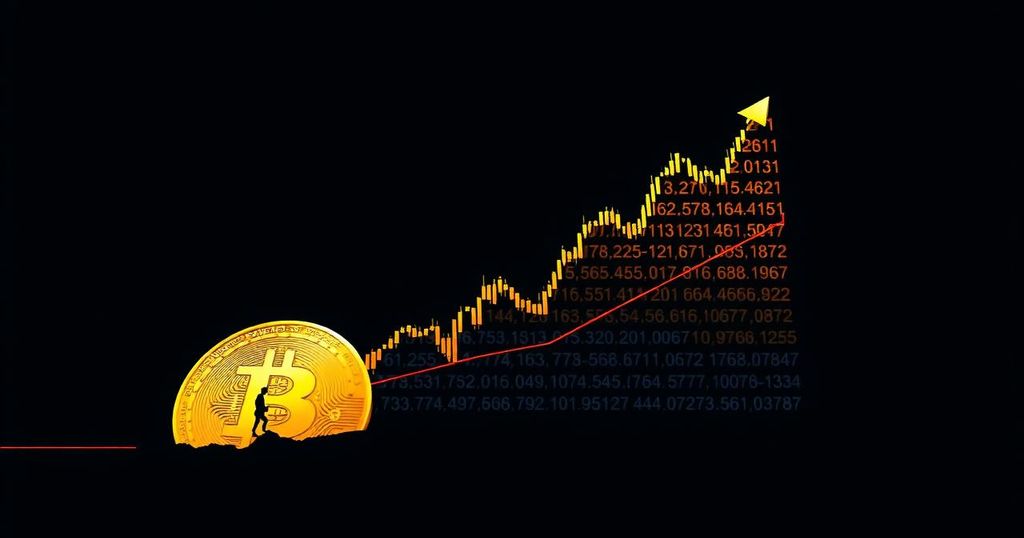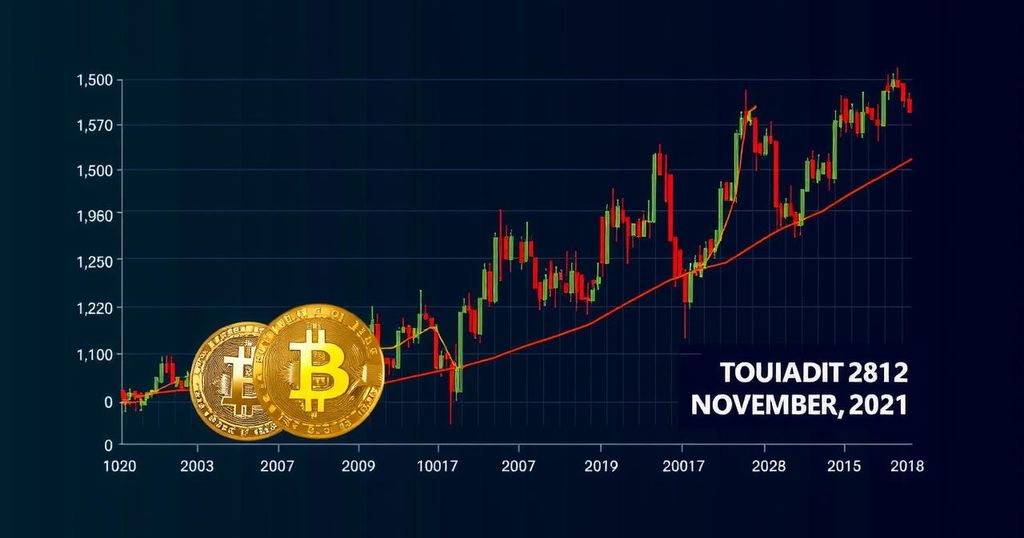Bitcoin Reaches One-Month High Amid Central Bank Easing Policies
Bitcoin prices have surged to a one-month high, reflecting a 21% increase since mid-September due to easing policies from central banks. Key rate cuts by the European Central Bank and the U.S. Federal Reserve, along with measures from the People’s Bank of China, have enhanced liquidity, supporting the rally. This year has seen renewed interest in cryptocurrencies, with Bitcoin experiencing significant gains driven by institutional acceptance. Predictions for Bitcoin’s price range from $100,000 to over $1 million by 2030, although extreme volatility poses risks to inexperienced investors.
Bitcoin has recently achieved a notable one-month high, reflecting a 21% increase since the second week of September, primarily driven by aggressive easing policies from various central banks worldwide. As of Wednesday, Bitcoin’s price surged from above $53,000 to over $64,000. Generally, such surges in Bitcoin values often correlate with central banks adopting looser monetary policies, as demonstrated by the European Central Bank’s and the U.S. Federal Reserve’s recent interest rate cuts. Furthermore, the People’s Bank of China’s recent measures to inject liquidity into its markets have added fuel to this rally. Historically, Bitcoin has shown tendencies to rally when the Federal Reserve shifts towards easing monetary policy. For instance, during the pandemic in 2020, Bitcoin experienced an unprecedented rise of 1,600%, peaking at more than $64,000 in April 2021 due to a surge in market liquidity aligned with low interest rates. However, this upward trend faced a significant setback post-November 2021 as the Fed indicated monetary tightening, leading to Bitcoin’s dramatic decline to around $15,000 by November 2022. In 2024, this year has marked a regeneration of interest in cryptocurrencies, with Bitcoin rising by 52%. Institutional acceptance and regulatory alignment have bolstered Bitcoin’s position in the market, with substantial price movements witnessed upon the approval of Bitcoin spot ETFs by the U.S. Securities and Exchange Commission (SEC). Ahead of the anticipated Bitcoin halving event scheduled for April, which historically affects mining rewards, Bitcoin’s performance remains robust, although its stability appeared stagnant in the recent months aside from a brief rally triggered by Donald Trump’s remarks at the Bitcoin 2024 conference. The resurgence in Bitcoin prices is attributed to various factors, including inflationary pressures on fiat currencies and enhancements in decentralized transaction methods. Prominent voices in the cryptocurrency community, including ARK Invest’s Cathie Wood, speculate that institutional investments could drive Bitcoin’s prices to extraordinary heights, with predictions of exceeding $1 million by 2030. Analysts remain cautiously optimistic, forecasting potential Bitcoin prices between $100,000 and $150,000 within this year, considering the ongoing halving cycles. However, it is essential to acknowledge the inherent risks involved due to the extreme volatility prevalent in the cryptocurrency markets, particularly for novice investors reliant on speculative trading without substantial foundational support.
In recent months, the cryptocurrency market has experienced volatile price movements, largely influenced by global economic policies, particularly those affecting liquidity from central banks. Recent interest rate cuts by major central banks, including the U.S. Federal Reserve, the European Central Bank, and the People’s Bank of China, have created favorable conditions for high-risk assets such as Bitcoin and other cryptocurrencies. Understanding the historical context of Bitcoin’s performance during monetary easing and the implications of central bank policies on its price dynamics provides essential insights into current market trends and investor sentiments.
The recent rise in Bitcoin’s price to a one-month high illustrates the significant impact of central banks’ easing policies on cryptocurrency valuations, particularly following aggressive interest rate cuts in September. While Bitcoin’s past performance during similar economic conditions offers a promising outlook, the volatility inherent in the cryptocurrency market presents considerable risk to investors. Projections for Bitcoin’s price growth remain optimistic; however, caution is necessary given the speculative nature that continues to dominate the market. Investors should remain informed and prepared as they navigate this complex and fluctuating landscape.
Original Source: www.euronews.com








Post Comment